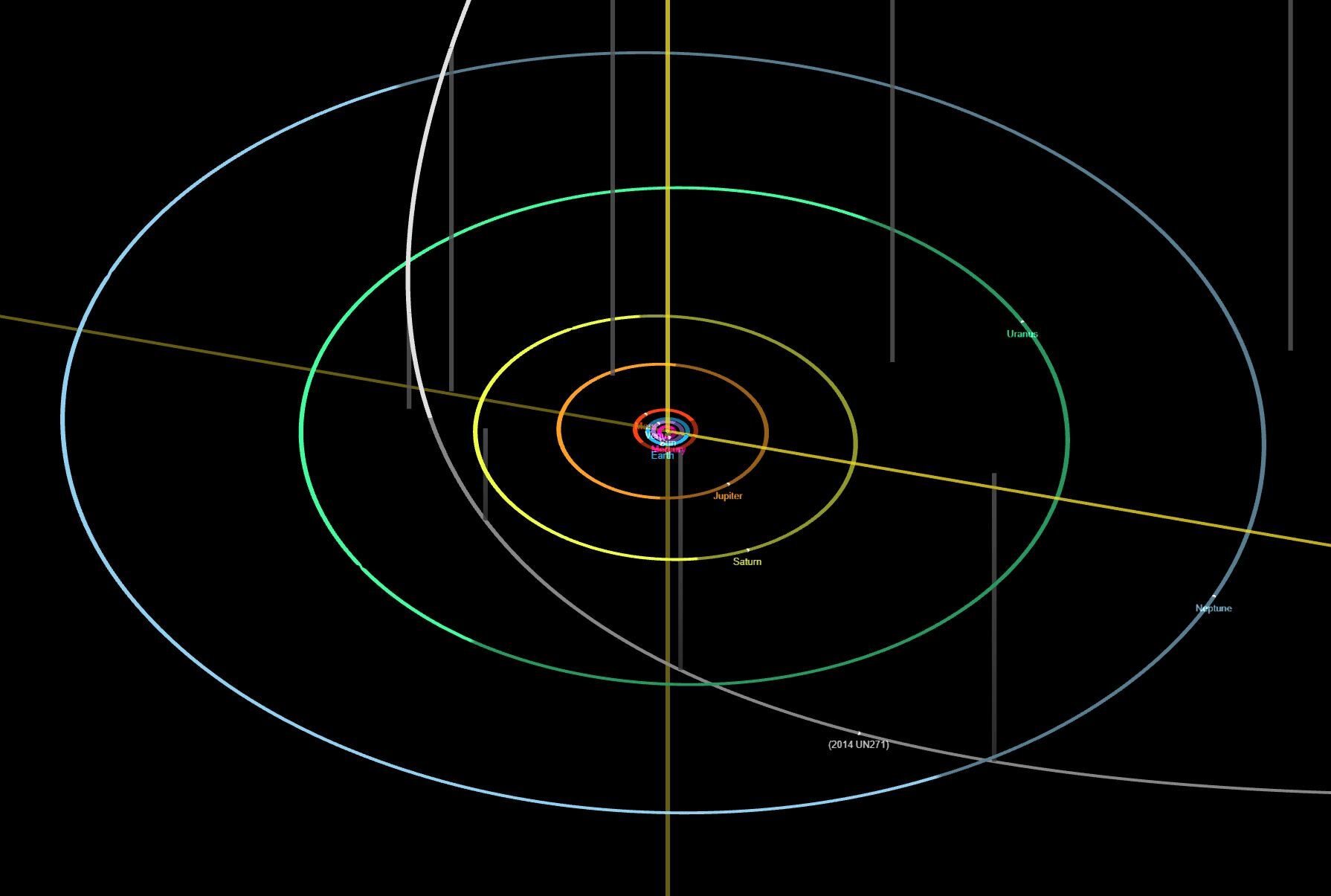FYI, do not get too excited here about the Oort cloud

The orbit and period is apparently difficult to nail down. Note this report, Space object with orbit stretching into the Oort cloud discovered,
https://phys.org/news/2021-06-space-orbit-oort-cloud.html The period is said to be 612,190 years. "One trip around the sun has been calculated to take 612,190 years. It is currently moving deeper into the solar system, which means astronomers will have an opportunity to observe it 10 years from now."
My observation. Wikipedia reports on this object.
https://en.wikipedia.org/wiki/2014_UN271 Wikipedia reports aphelion distance 40,000 au inbound, 55,000 au outbound. Perihelion distance 10.95 au. Semi-major axis inbound = 20,000 au, outbound = 27,000 au, e = 0.99945 inbound, 0.9996 outbound. Orbital period or P = 3 million years inbound, 4.5 million years outbound. Apparent magnitude mv + 21.2. Compare the orbital period in wikipedia to the phys.org report, 612,190 years. Using Jean Meeus Astronomical Alogrithms, I used a = 24,000 au, e = 0.9996, aphelion = 47,990 au, perihelion = 9.6 au, mass of object = 6 x 10^17 g cm^-3. Orbital period = 3.7183 x 10^6 years and in a period of 1 billion years could complete 269 revolutions around the Sun, using 612,190 year period, even more perihelion passages are needed. Whether the comet/object has completed multiple perihelion passages or aphelion passages is another story.
Astronomers have discovered a new comet coming from the Oort Cloud — and early estimates suggest it's a big one.

skyandtelescope.org



